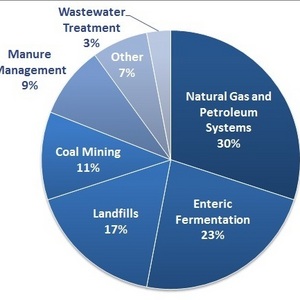EPA publishes methane reduction proposal for new landfills




U.S. EPA
July 1, 2014
BY Erin Krueger
The U.S. EPA is taking action to reduce methane emissions from landfills. On June 30, the agency published proposed rule to update its air standards for new municipal solid waste (MSW) landfills. The same day, the EPA also published an advance notice of proposed rulemaking (ANPR) seeking public input on whether and how to update current emissions guidelines for existing landfills to further reduce their emissions, including methane.
According to the EPA, the proposed rule would require certain landfills to capture additional landfill gas, which would reduce methane emissions and help reduce pollution that harms public health. The proposal is part of President Obama’s Climate Action Plan—Strategy to Reduce Methane Emissions. That strategy was released in March.
Advertisement
Advertisement
“Reducing methane emissions is a powerful way to take action on climate change,” said EPA Administrator Gina McCarthy. “This latest step from the President’s methane strategy builds on our progress to date and takes steps to cut emissions from landfills through common-sense standards.”
Information released by the EPA indicates that the proposal would require certain new MSW landfills to begin controlling landfill gas at a lower emission threshold than currently required. Under the proposal, landfills would capture two-thirds of their methane and air toxics emissions by 2023. That is capture level 13 percent higher than that required by current rules. The EPA has estimated that the net nationwide annual costs of complying with the additional requirements in the proposed rule would be $471,000 in 2023.
Regarding landfill gas treatment, the proposed rule explains that the EPA is addressing two issues. First, it is proposing to clarify that the use of treated landfill gas is not limited to use as a fuel for a stationary combustion device, but also allows other beneficial uses such as vehicle fuel, production of high-Btu gas for pipeline injection, and use as a raw material in a chemical manufacturing process. Second, the EPA is proposing to clarify what constitutes landfill gas treatment as well as monitoring, recordkeeping and reporting requirements for treatment systems.
Advertisement
Advertisement
A 60-day comment period will open on both the proposed fuel and ANPR following publication in the Federal Register. Pre-publication versions of the proposals can be downloaded in the EPA website.
Related Stories
The U.S. Department of Energy Bioenergy Technologies Office (BETO) announced up to $23 million in funding to support research and development (R&D) of domestic chemicals and fuels from biomass and waste resources.
The U.S. DOE has announced its intent to issue funding to support high-impact research and development (R&D) projects in two priority areas: sustainable propane and renewable chemicals and algal system cultivation and preprocessing.
Sens. Sherrod Brown, D-Ohio, and Pete Ricketts, R-Neb., in August introduced the Renewable Chemicals Act, a bill that aims to create a tax credit to support the production of biobased chemicals.
The Chemical Catalysis for Bioenergy Consortium, a consortium of the U.S. DOE’s Bioenergy Technologies Office, has launched an effort that aims to gather community input on the development of new biomass processing facilities.
USDA on March 8 celebrated the second annual National Biobased Products Day, a celebration to raise public awareness of biobased products, their benefits and their contributions to the U.S. economy and rural communities.
Upcoming Events










